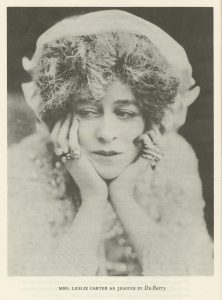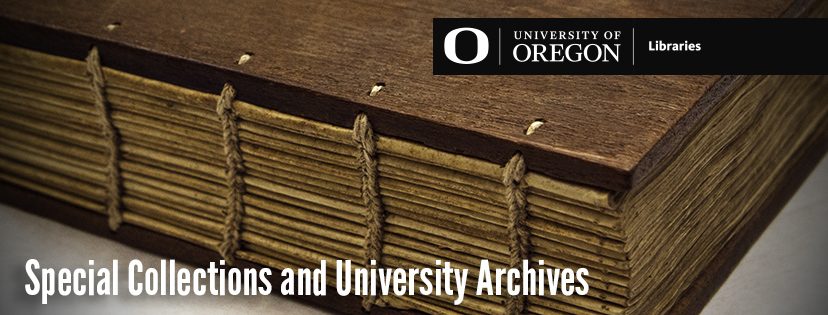Drama at the Museum!

This is the second of a series of blog posts that will explore exhibits during the 1960s at the Museum of Art at the University of Oregon, known today as the Jordan Schnitzer Museum of Art. Part of the Documenting UO History Project, this series will investigate two major types of exhibits: the Statewide Services Program and national exhibits that traveled to the Museum. The University Archives collection of the Museum’s records, cross referenced with the Jordan Schnitzer’s current holdings, reveal a unique institutional history of the Museum, its exhibits, and its employees. Though the Jordan Schnitzer’s current focus is on Asian art, and the Museum of Art also worked to complement its Asian collection, this project will focus on a variety of other kinds of exhibit subjects. See previous posts here.
Have you ever worked on a group project where no one’s role was completely clear? Institutions often have this challenge too; similar kinds of collaboration and communication needs to happen between all parties. For example, the American Educational Theatre Association (AETA) decided to hold its annual conference on the UO campus in August of 1962, and they coordinated the conference themes with art exhibits. AETA program managers worked with the Museum of Art’s employees to display theatrical art during the conference. They encountered many ups and downs along the way. The Museum of Art hosted several exhibitions for the AETA in their galleries. One of these was a large exhibit called “A Portrait History of American Acting,” and this post will explain some of the challenges involved in displaying it at the Museum of Art.
Despite the theatrical theme of the conference, the principal drama actually occurred at the Museum! Museum of Art director Wallace Baldinger and AETA event organizers struggled to obtain the largest exhibit, “A Portrait History of American Acting.” This massive collection of seventy-seven portraits showed famous American actors in theater performances or movies. It used two major mediums: engraving and photography. However, getting it to the museum at a low cost and on time required Baldinger to juggle multiple issues.
In order to make this exhibit happen, several people were involved in bringing the art to Oregon. Unfortunately, they were scattered across the country. Imagine – how would you bring together people to work on a project who lived in different places? Today, Google Docs and Skype let anyone collaborate, but these people had no such luxury. The three main players in this drama were Wallace Baldinger, Christian Moe, the Chair of the AETA Art Museums and Theatres Project, and Frederick J. Hunter, a professor of Theater at the University of Texas, Austin. Moe chose the exhibit, but it was difficult for him to help with much because he taught theatre in Illinois. At the University of Texas, Hunter worked for the Hoblitzelle Theatre Arts Library and offered to send the collection to the University of Oregon Museum of Art for the conference. Moe, Hunter, and Baldinger assumed everything for “A Portrait History of American Acting” was resolved. All was well until Baldinger realized he had expected another person the AETA would take on the shipping of the exhibit. When he found out that was wrong, he had a major problem on his hands. Hunter and Moe weren’t sure how the exhibit would even be financed, let alone transported. Baldinger had to coordinate between the two men from January to July 1962 to take care of everything.

When the shipping costs came back into the picture, all three men were understandably worried about how much the exhibit would cost their organizations. They sent many letters to each other about the transportation costs and insurance rates in July 1962. Moe wrote to Baldinger and Hunter that the AETA did not have enough money to pay for “A Portrait History.” By this point, Baldinger was afraid they would have to cancel the exhibit altogether. Then, Hunter hit on the idea of contacting the Hoblitzelle Foundation, the patron of the University of Texas library that owned the exhibit. He managed to convince the foundation to fund two-way shipping and most of the insurance for the “Portrait History.” Baldinger and Moe were thrilled, and the exhibit traveled from Austin to Eugene safely and in time for the AETA conference in August.
We take for granted these days the ability to reach anyone, anywhere in the country instantly by email. Back in the pre-computer days of the 1960s, though, these men were delayed as much by the slow methods of communication as the complicated discussions of the exhibit itself. Letters from Oregon to Texas to Illinois took two or three days to travel, and so to resolve a single issue often took weeks. Despite the potential for misunderstanding and fraying nerves, it appears that Baldinger and Hunter were good friends. In their letters, they affectionately addressed each other as ‘Wally’ and ‘Fred.’ Their friendship was likely due to their both being employed at the University of Oregon in the late 1950s: Hunter taught theater and speech at the University of Oregon before moving to the University of Texas.
Today, museum professionals at the Jordan Schnitzer Museum of Art use many forms of electronic media communication. They work with people across Oregon, the country, and the world to bring high quality art to the University of Oregon. If Baldinger, Moe, and Hunter had access to e-mail and other modern communication methods, as museum professionals do today, the confusion they experienced might have been easier to deal with, or avoided altogether.
Angela Rothman
Special Collections Intern
Documenting UO History Project

